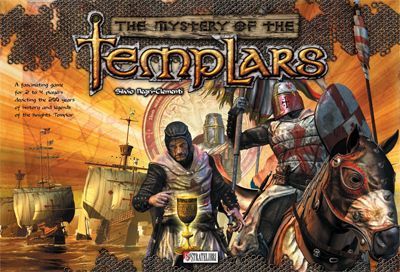The Mystery of the Templars (2013) Board Game
The Mystery of the Templars is a board game that was released in 2013 by designer Silvio Negri-Clementi and published by Giochi Uniti. The game is set in a medieval theme and revolves around the mysterious and secretive Templar Knights.
Game Components of The Mystery of the Templars
How To Setup The Mystery of the Templars
To set up the game, players need to prepare the map, distribute the starting resources and cards, and organize the event deck into three periods. Each player selects a set of Templar cards, and the mission cards are shuffled and placed within reach. The event deck is divided into three periods, each representing a significant historical timeframe. The initial phase involves setting up the Holy Land and Europe boards, distributing the starting money and resources, and ensuring each player has the necessary cards and components.
Gameplay Mechanics and Game Objective
Player Experience
The game starts slowly as players build their initial resources and establish their presence in Europe. It requires multiple playthroughs to fully grasp the intricacies of the game mechanics and historical events. The game is rich in micromanagement, involving detailed resource and goods management, as well as strategic planning for upcoming historical events. The inclusion of a historical booklet and detailed map enhances the thematic immersion.
Pros
Cons
Personal Thoughts on The Mystery of the Templars
The Mystery of the Templars is ideal for players who enjoy economic and historical games with deep strategic layers. It is particularly suited for those interested in the history of the Knights Templar and who appreciate a game that simulates 200 years of historical events. While it may not be the best fit for casual gamers due to its complexity and length, it is a gem for serious board game enthusiasts looking for a challenging and immersive experience.
We are supported by our audience. When you purchase through links on our site, we may earn an affiliate commission, at no extra cost for you. Learn more.

